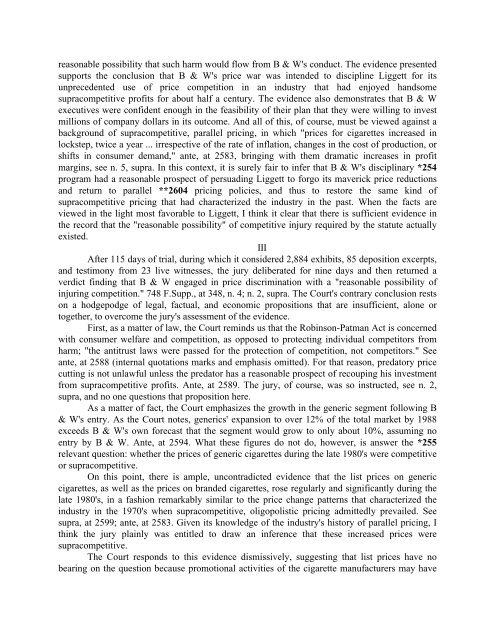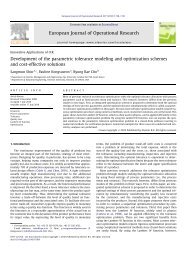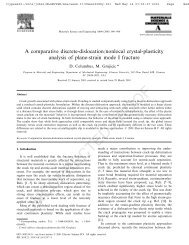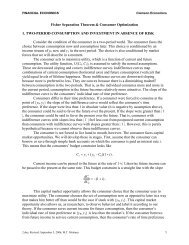509 U.S. 209, 113 S.Ct. 2578 BROOKE GROUP LTD., Petitioner v ...
509 U.S. 209, 113 S.Ct. 2578 BROOKE GROUP LTD., Petitioner v ...
509 U.S. 209, 113 S.Ct. 2578 BROOKE GROUP LTD., Petitioner v ...
You also want an ePaper? Increase the reach of your titles
YUMPU automatically turns print PDFs into web optimized ePapers that Google loves.
easonable possibility that such harm would flow from B & W's conduct. The evidence presented<br />
supports the conclusion that B & W's price war was intended to discipline Liggett for its<br />
unprecedented use of price competition in an industry that had enjoyed handsome<br />
supracompetitive profits for about half a century. The evidence also demonstrates that B & W<br />
executives were confident enough in the feasibility of their plan that they were willing to invest<br />
millions of company dollars in its outcome. And all of this, of course, must be viewed against a<br />
background of supracompetitive, parallel pricing, in which "prices for cigarettes increased in<br />
lockstep, twice a year ... irrespective of the rate of inflation, changes in the cost of production, or<br />
shifts in consumer demand," ante, at 2583, bringing with them dramatic increases in profit<br />
margins, see n. 5, supra. In this context, it is surely fair to infer that B & W's disciplinary *254<br />
program had a reasonable prospect of persuading Liggett to forgo its maverick price reductions<br />
and return to parallel **2604 pricing policies, and thus to restore the same kind of<br />
supracompetitive pricing that had characterized the industry in the past. When the facts are<br />
viewed in the light most favorable to Liggett, I think it clear that there is sufficient evidence in<br />
the record that the "reasonable possibility" of competitive injury required by the statute actually<br />
existed.<br />
III<br />
After 115 days of trial, during which it considered 2,884 exhibits, 85 deposition excerpts,<br />
and testimony from 23 live witnesses, the jury deliberated for nine days and then returned a<br />
verdict finding that B & W engaged in price discrimination with a "reasonable possibility of<br />
injuring competition." 748 F.Supp., at 348, n. 4; n. 2, supra. The Court's contrary conclusion rests<br />
on a hodgepodge of legal, factual, and economic propositions that are insufficient, alone or<br />
together, to overcome the jury's assessment of the evidence.<br />
First, as a matter of law, the Court reminds us that the Robinson-Patman Act is concerned<br />
with consumer welfare and competition, as opposed to protecting individual competitors from<br />
harm; "the antitrust laws were passed for the protection of competition, not competitors." See<br />
ante, at 2588 (internal quotations marks and emphasis omitted). For that reason, predatory price<br />
cutting is not unlawful unless the predator has a reasonable prospect of recouping his investment<br />
from supracompetitive profits. Ante, at 2589. The jury, of course, was so instructed, see n. 2,<br />
supra, and no one questions that proposition here.<br />
As a matter of fact, the Court emphasizes the growth in the generic segment following B<br />
& W's entry. As the Court notes, generics' expansion to over 12% of the total market by 1988<br />
exceeds B & W's own forecast that the segment would grow to only about 10%, assuming no<br />
entry by B & W. Ante, at 2594. What these figures do not do, however, is answer the *255<br />
relevant question: whether the prices of generic cigarettes during the late 1980's were competitive<br />
or supracompetitive.<br />
On this point, there is ample, uncontradicted evidence that the list prices on generic<br />
cigarettes, as well as the prices on branded cigarettes, rose regularly and significantly during the<br />
late 1980's, in a fashion remarkably similar to the price change patterns that characterized the<br />
industry in the 1970's when supracompetitive, oligopolistic pricing admittedly prevailed. See<br />
supra, at 2599; ante, at 2583. Given its knowledge of the industry's history of parallel pricing, I<br />
think the jury plainly was entitled to draw an inference that these increased prices were<br />
supracompetitive.<br />
The Court responds to this evidence dismissively, suggesting that list prices have no<br />
bearing on the question because promotional activities of the cigarette manufacturers may have
















